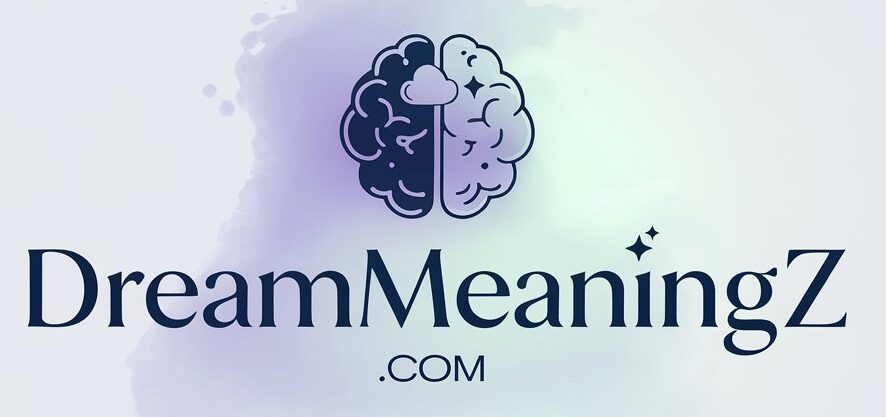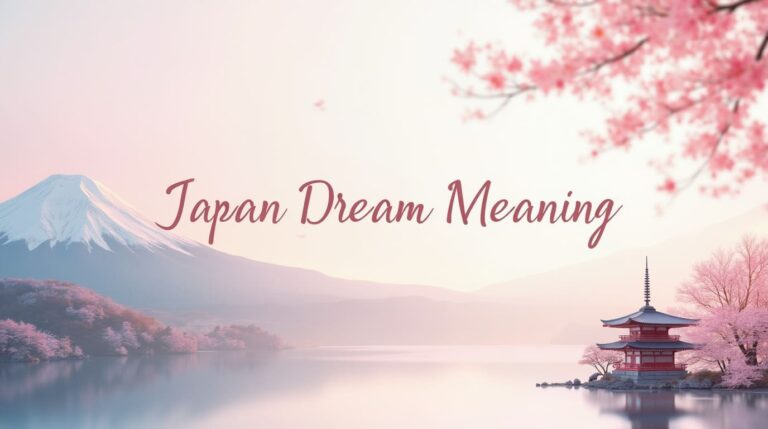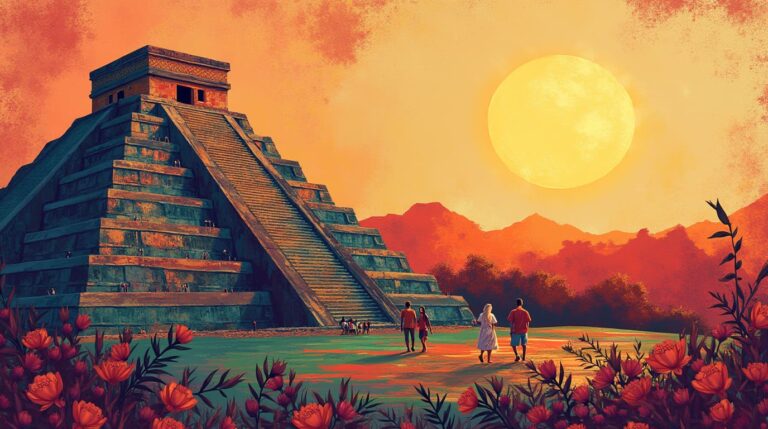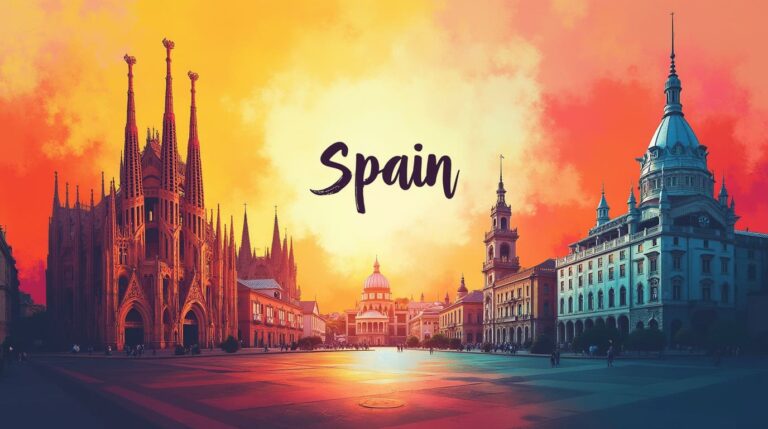China Dream Meaning

The Chinese national vision, introduced by President Xi Jinping, aims to make China great again. It focuses on economic growth to improve people’s lives. This vision includes economic, social, and cultural aspects to achieve national rejuvenation.
The government has set goals to achieve the China Dream. Economic development is a key area of focus. It aims to bring growth and prosperity to the country.
The dream is about creating a better life for the Chinese people. It is closely linked to economic development. As China grows, this vision will shape its future, focusing on economic and other key areas.
Origins of the Chinese National Vision
The China Dream idea comes from ancient Chinese philosophy. It envisioned a strong and prosperous China. Over time, it has grown, influenced by social, economic, and political changes. This shows China’s rich culture and complex history.
President Xi Jinping’s life in a small village in Shaanxi Province shaped his vision. The village’s improvements, like better roads and Internet access, show China’s progress. These changes highlight the country’s journey to a moderately prosperous society.
Cultural Roots in Ancient Philosophy
The China Dream’s roots are in ancient Chinese philosophy. It was influenced by great thinkers and historical events. Knowing these roots helps us understand the China Dream’s role in today’s politics.
Modern Political Context
In today’s politics, the China Dream is key. President Xi Jinping introduced it for national rejuvenation. It aims for a moderately prosperous society, with big strides in the last 40 years.
Social Evolution of the Concept
The China Dream has evolved with China’s social progress. Improvements in living standards and access to education and healthcare have grown. As China keeps growing, the China Dream will remain important for its future.
China Dream Meaning in Contemporary Society
The China Dream has a big impact on today’s Chinese society. It shapes the country’s economy and how society changes. This dream is about making China prosperous and strong, where everyone can be happy and fulfilled.
The dream is about building a “moderately prosperous society.” It’s based on values like prosperity, democracy, and harmony. These values are taught in schools and shared through media.
Some key parts of the China Dream are:
- Creating a prosperous and powerful nation
- Improving the standard of living for all citizens
- Promoting core socialist values
- Enhancing China’s international influence and reputation
The China Dream is important for China’s economy. The government has started many projects to grow the economy. These projects have helped China grow fast and made life better for many people.
| Aspect | Impact on Contemporary China |
|---|---|
| Economic Development | Significant growth and improvement in standard of living |
| Social Impact | Influence on the way people think about their country and its place in the world |
| International Influence | Enhanced reputation and influence on the global stage |
The China Dream is a symbol of China’s goals and dreams. It drives the country’s economic and social growth.
Core Elements of National Rejuvenation
National rejuvenation is a complex idea that covers many areas of a nation’s growth. In China’s case, it includes economic growth, military strength, and cultural revival. These are the main parts that make up this vision.
Economic growth is key, with clear goals set by the government. Military modernization gets a big push with new tech and skills. Cultural revival is also important, aiming to keep and share China’s cultural treasures.
These elements are linked to the China Dream. It’s about making China strong again.
Economic Development Goals
Economic growth is a big part of national rejuvenation. The government has set some big goals. These include:
- Increasing GDP to USD 56.60 trillion by 2050
- Quadrupling per capita GDP to USD 42,000 by 2050
- Becoming a global leader in innovation and technology
Military Modernization and Cultural Renaissance
Military strength and cultural revival are also key. Military modernization aims to boost China’s military power. Cultural revival works to keep and share China’s cultural heritage.
Social Impact on Chinese Citizens
The China Dream has a big impact on Chinese citizens, changing their lives and work. The country wants to be prosperous and powerful. This dream means a better life for many people.
Some key aspects of the social impact of the China Dream include:
- Improved living standards: As China’s economy grows, people have better education, healthcare, and infrastructure.
- Increased opportunities: The China Dream brings new chances for jobs, education, and moving up in society.
- Changing values: It also makes people focus more on happiness and well-being, as seen in the happiness campaign.
But, the China Dream’s impact is complex. There are worries about wealth distribution and social inequality. As China grows, it’s important to make sure everyone benefits. We need a fair and prosperous society for all.
International Relations and Global Perspective
The China Dream has big effects on how China interacts with the world. It makes China a major player globally. With its huge economy and trade ties, China is deeply connected to the world market.
The Belt and Road Initiative is a big part of the China Dream. It links 150 countries across Asia, Africa, Europe, and Latin America by 2023.
China’s influence is seen in its investments in global trade networks. It has invested in ports in Sri Lanka, Greece, and Kenya. China also started new international groups like the Shanghai Cooperation Organization and the BRICS New Development Bank.
Key Initiatives and Investments
- Belt and Road Initiative: uniting 150 countries across Asia, Africa, Europe, and Latin America
- Investments in global trade networks: Hambantota port in Sri Lanka, Piraeus port in Greece, and Mombasa port in Kenya
- Alternative institutions: Shanghai Cooperation Organization, BRICS New Development Bank, Asian Infrastructure Investment Bank, and Silk Road Fund
China’s goals in international relations are tied to its economic growth, military, and cultural revival. Its diplomacy aims to promote its interests worldwide. The China Dream is key to China’s global ambitions, showing its desire to be a major world power.
| Initiative | Countries Involved | Investments |
|---|---|---|
| Belt and Road Initiative | 150 countries | Extensive investments in infrastructure development |
| Shanghai Cooperation Organization | 8 member states | Regional security and economic cooperation |
| BRICS New Development Bank | 5 member countries | Infrastructure development and economic cooperation |
Youth Movement and Future Generations
The China Dream has big plans for the youth and future generations. It aims to improve their lives and chances for the future. Recently, China has seen a big increase in young people overcoming poverty. Over 25 million have bettered their lives.
Young people in China are deeply connected to their culture. They want to make a positive impact on society. The internet has been key in this, with 94.9% of minors online by 2020. It helps them connect and share, building a sense of community.
Some important facts about China’s youth and future include:
- 180 million netizens aged 6 to 18 by the end of 2020
- 5,788 registered museums across China, with an average of one new museum opening every two days from 2016 to 2020
- A narrowing gap in internet accessibility between urban and rural areas, from 5.4 percentage points in 2018 to 0.3 percentage points by the end of 2020
The term “houlang,” or “rear wave,” is key in China. It talks about the younger generation. This term symbolizes their hopes and challenges. As the youth movement grows, it will shape China’s culture and society more.
| Year | Number of Netizens Aged 6-18 | Internet Accessibility |
|---|---|---|
| 2018 | 150 million | 90.5% |
| 2020 | 180 million | 94.9% |
Economic Pillars Supporting National Aspirations
China’s economic pillars are key to its national goals. These goals include becoming rich and powerful, revitalizing the country, and making the people happy. The government sees innovation and technology as major drivers for growth.
Innovation and Technology
Innovation and technology are vital for China’s economy. The government has put a lot of money into new tech and industries. This has led to big steps forward in areas like AI, green energy, and biotech.
Infrastructure Development
Building better infrastructure is another big part of China’s economy. The government is working on new roads, railways, and more. This makes it easier to move goods and people around.
Market Reforms
Market reforms are also key. The government wants to make the economy more efficient and competitive. This has brought in more foreign investment and trade, helping the economy grow.
The following table summarizes the economic pillars supporting China’s national aspirations:
| Economic Pillar | Description |
|---|---|
| Innovation and Technology | Key driver of economic growth and development |
| Infrastructure Development | Promotes economic growth and development through construction of new infrastructure |
| Market Reforms | Promotes economic efficiency and competitiveness through market-oriented reforms |
China is focusing on these pillars to reach its national goals. The government is pushing for more innovation, better infrastructure, and market reforms. These efforts are expected to keep driving the economy forward in the future.
Cultural Heritage Preservation
Cultural heritage preservation is key to the China Dream. It shapes the country’s identity and heritage. The Chinese government has launched several initiatives to protect this heritage. For example, the number of public museums in China grew from 2,650 in 2011 to 4,109 in 2016.
Some notable efforts include:
- Protecting and utilizing cultural relics
- Promoting traditional Chinese arts and crafts
- Increasing access to digital books, magazines, and newspapers in county libraries
These efforts aim to boost economic and social development. They also protect China’s rich cultural heritage. By focusing on preservation, the government ensures the country’s cultural identity and heritage are safe for the future.
Regional Development Strategy
China’s regional development strategy is vital for the country’s growth. It aims to boost rural areas through urban-rural integration and provincial coordination. By 2049, China hopes to be a global leader, with regional development key to this goal.
The strategy includes several important parts:
- Urban-rural integration aims to grow rural economies with new infrastructure and industries.
- Provincial coordination works to increase economic efficiency and competitiveness across provinces.
- Investment in infrastructure, like high-speed railways, will connect over 200 cities by 2020.
These efforts will help China grow and develop further. The country’s GDP is expected to rise significantly. The regional strategy is a big part of China’s China Dream, aiming to make it a modern, powerful nation by 2049.
China wants to grow its economy, reduce poverty, and improve living standards through regional development. This strategy will positively impact the country’s development. It will be essential in making China a leading world power.
Conclusion
The China Dream is a powerful vision for the nation’s future. It’s rooted in China’s rich culture and shaped by its modern politics. This dream aims to improve the country’s economy, society, and culture.
China is working hard to achieve its goals. It’s investing in projects like the Belt and Road program. It’s also focusing on innovation and technology to become a global leader.
At the same time, China is protecting its cultural heritage. It’s also committed to sustainable development. These efforts are key to its national agenda.
The China Dream will guide the country’s future, led by the younger generation. This vision is inspiring people and drawing attention worldwide. With its determination and connection to its past, China is ready to become a major global force.
FAQ
What is the China Dream?
The China Dream is a big idea by President Xi Jinping. It aims to make China great again and bring happiness to its people. It’s about creating a strong, prosperous China where everyone can live well.
What are the origins of the China Dream concept?
The China Dream comes from ancient Chinese thoughts. It’s about a strong, prosperous China. Over time, it has grown, influenced by many factors, becoming a key part of Chinese politics today.
How does the China Dream impact contemporary Chinese society?
The China Dream deeply affects Chinese society today. It drives the country’s growth and changes. It’s seen as a way to make China great again, impacting culture and people’s lives.
What are the core elements of national rejuvenation in the China Dream?
National rejuvenation in the China Dream includes economic growth, military strength, and cultural revival. These areas are key to China’s ongoing development.
How does the China Dream impact the lives of Chinese citizens?
The China Dream changes Chinese citizens’ lives. It offers a chance for better economic and social status. But, it also raises questions about wealth distribution and social inequality.
What are the international relations and global implications of the China Dream?
The China Dream affects international relations and China’s global role. It’s linked to the Belt and Road Initiative, aiming to boost regional cooperation. It also shows China’s efforts to promote its interests worldwide.
How does the China Dream impact the youth movement and future generations in China?
The China Dream influences China’s youth and future. For many young people, it’s a chance to achieve their dreams and contribute positively to society.
What are the economic pillars supporting the national aspirations of the China Dream?
The China Dream’s economic pillars are innovation, technology, infrastructure, and market reforms. These are seen as essential for economic growth.
How does the China Dream impact the preservation of cultural heritage in China?
The China Dream affects cultural heritage preservation. It shapes China’s cultural identity. The government has plans to protect Chinese culture and heritage.
What is the regional development strategy connected to the China Dream?
The China Dream’s regional strategy includes urban-rural integration and provincial coordination. These are key to economic growth across China’s regions and provinces.






